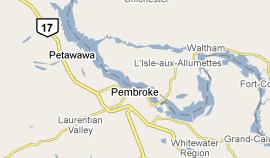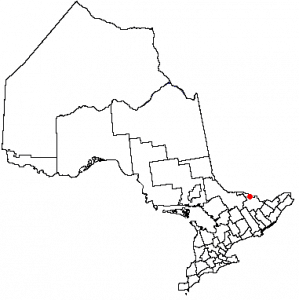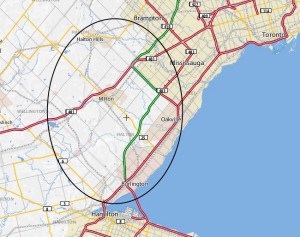The Bell Beavers have been lying to Canadians for at least a year about the speed of their broadband connections through Bell. Despite assertions in advertising that Bell Internet does not experience “slowdowns,” the company admitted Tuesday it intentionally does slow down certain broadband applications by up to 98.5% for 9.5 hours a day.
Appearing before commissioners of the Canadian Radio-television Telecommunications Commission hearing on bandwidth management, Jonathan Daniels, Bell’s vice-president of regulatory law, told commissioners peer-to-peer file transfers are “throttled,” or reduced in speed, for up to 10 hours daily.
In Ontario and Quebec, speeds are reduced to 256kbps (kilobits per second) between 6pm-1am, representing a 98.5% reduction in the maximum speed of 16Mbps offered as part of Bell’s Internet Max 16 service. During dinner time, starting at 4:30pm-6pm, speeds are reduced to 512kbps. Even those up late to avoid the throttle will still encounter it between 1am-2am, when speeds are also reduced to 512kbps.
Although Bell has never denied throttling users’ speeds, the company clarified the extent of the throttling and its specifics for the CRTC yesterday. Daniels promised the company would post this information on its website soon, so customers are fully informed about the practice before signing up for service.
Bell defended the practice, extending not only to its own customers but also to customers of independent Canadian ISPs who obtain their broadband access from Bell’s wholesale bandwidth division. Bell claims it was not satisfied with simply raising prices or placing usage limits on its service — the company also felt it necessary to start reducing the speeds of “problem applications” on its network. Bell lobbied the CRTC to endorse Bell’s bandwidth management plan and also called on the commission to apply any regulatory changes not only to its own DSL service, but also for competing technologies like cable, fiber, and even wireless broadband. Inclusion of the latter technology would establish a “lowest common denominator” broadband standard for Canada, where all players would be permitted to limit and throttle usage based on the least capable competing technology.
Independent Internet providers across Canada complain their wholesale access from Bell not only faces speed throttles, but also usage based pricing, which effectively could render most uncompetitive. They have asked the commission to force Bell to stop throttling their wholesale accounts and permit them to establish whatever bandwidth management technologies are appropriate. Bell dismissed that notion, claiming that unless independent providers use the same policies Bell does, demand on its network from its wholesale accounts would create congestion problems for Bell’s own retail customers.
CRTC Chair Konrad von Finckenstein asked why Bell is the only ISP in Canada that throttles peer-to-peer downloads, while most other ISPs only throttle uploads. Daniels claimed that downloads are a bigger problem for the Bell network, and that most cable ISPs engaged in throttling are dealing with a network much more sensitive to upload activity.
The issue is hotly debated across Canada because much of the network that Bell and other providers utilize for Internet connectivity was built with Canadian taxpayer dollars. Because the network was built with public funds, Bell cannot refuse requests from competitors to purchase access to their network at wholesale prices, which are set by Canadian regulators.
The wholesale price for Canadian residential customers with a 5Mbps connection starts at $19.50 per month. An additional charge for connecting an independent network to Bell’s network is levied, along with a specified amount of bandwidth consumption. A wholesale account on Bell’s “High Speed Access” network, which doesn’t engage in traffic throttling, is not regulated and is currently priced at $40 a month for a 6Mbps connection. ISPs are required to install more of their own network management equipment, making access to this higher level of service an expensive proposition for both the ISP and the residential customer. Few ISPs choose the “High Speed Access” network because of the cost.
The CRTC became involved after getting complaints from Bell’s wholesale customers who suddenly discovered their own customers were being speed throttled. Last November, the commission found such throttling by Bell was permitted, primarily because they throttled every customer’s speeds — retail and wholesale. But a decision to hold hearings into bandwidth management was deemed necessary, and the result was a week of hearings that wrapped up Tuesday.
 A joint broadband project committee met Monday for the first time to review the project’s budget and rollout plans. The two communities joined forces to appeal for broadband connectivity, and now will work together to administer the project. Laurentian Valley Councillor George Hodgkinson will serve as committee chairman and Petawawa Councillor Treena Lemay as vice-chairwoman.
A joint broadband project committee met Monday for the first time to review the project’s budget and rollout plans. The two communities joined forces to appeal for broadband connectivity, and now will work together to administer the project. Laurentian Valley Councillor George Hodgkinson will serve as committee chairman and Petawawa Councillor Treena Lemay as vice-chairwoman. have “waited a long time to get high-speed Internet at their homes.”
have “waited a long time to get high-speed Internet at their homes.”

 Subscribe
Subscribe


